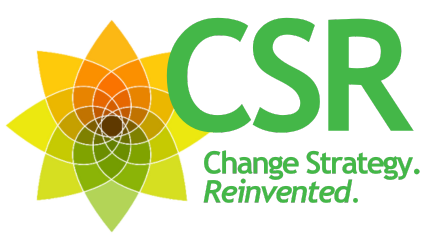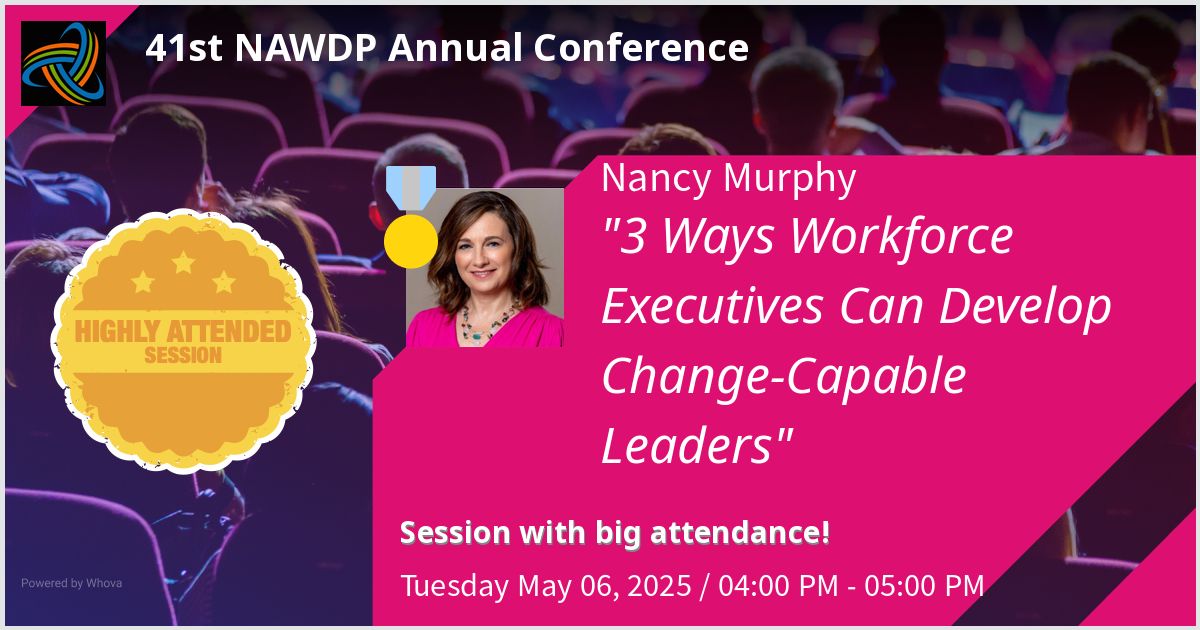
A panel moderator posed that question to me, my fellow panelists and others at a recent conference on sustainability. He then looked right at me and said, “Nancy, that’s what you do, right? Change companies for a living?”
I was so taken aback that I can’t even recall my response. I am certain, however, that it was not, “Yes, I change companies for a living.”
Why did his question bother me so much?
Having spent more than half my professional years in a consulting role, I’m confident that I’ve influenced and helped strengthen the leaders and organizations I’ve worked with. Nonetheless, I’d never say I changed them – as if anyone from the outside could be completely responsible for significant organizational change.
Some may say I’m not taking enough credit, or even that I lack self-confidence or a strong ego.
But the truth is I am confident: Confident in my belief that no one outside a company or organization – no matter how seemingly brilliant, influential, experienced or assertive – can or should “own” the change of that organization. No consultant should wander the earth looking for organizations to “do things to” – like change them.
Instead, I believe our job is to nudge and support leaders who are trying to change their own company or organization. Leaders inside organizations are the true heroes of change efforts. Consultants get the assist; internal leaders get the score. And both win.
Following several days pondering why that panel moderator’s question annoyed me so much, I realized he may not be alone in his view of the role consultants can and should play.
I now concede that perhaps there are two approaches to this role – the fixer, who imposes change from the outside in, and the facilitator, who catalyzes change from the inside out. And the onus is on would-be clients to understand the distinction and select accordingly.
What’s the difference? Here are my thoughts (see if you can guess which type I am):
1) The facilitator helps others realize the change they are called to lead — organic, incremental and sustainable change. The fixer often puts herself at the center with quick solutions that only she can deliver.
2) The facilitator balances past consulting experience and resulting wisdom with a fresh, observant approach to each organization’s unique challenge. The fixer purports to arrive with all the answers based on his proven formula.
3) The facilitator garners trust and credibility through a “mission over me” attitude, and can verbalize heated issues or problems that no staffer would dare say aloud. The fixer, in contrast, often is allied with a particular powerful player or team, representing their agenda and implementing accordingly.
4) The facilitator recognizes the value in co-creating strategies and solutions with clients so that they “own” the results and expand their capacity to sustain them over time. The fixer approaches change as a technician and often wants clients to feel dependent on him for success.
5) The facilitator helps teams or boards rise above internal politics, personal dislikes or limiting assumptions and beliefs to realize their shared vision – a role that often only an external advisor can play. The fixer pursues the fastest, simplest path forward which often means not soliciting input from or even engaging all key players.
Which am I? You guessed it. I’m definitely the facilitator. I never present myself as someone with all the answers – because while I know a few things, I certainly don’t know everything. Rather than striving to command all the attention in a room, my aim is just the opposite.
I don’t want clients to believe they can’t continue without me. Instead, I help clients develop or enhance their skills and capacity to be better leaders and team members because of our work together. The results are theirs to own, celebrate and take credit for.
Why else do I believe I don’t “change companies for a living?” Because I’m not the one who will live long-term, day to day with the outcomes (positive or negative) of the change. As one corporate leader put it to me, “With the change I’m leading, I’m sticking my neck out every day. I just have to be careful not to stick it out too far or it’ll get cut off.” I recognize that I am not the one sticking my neck out and taking the risks required for profound organizational change – my client is.
As a consultant, I worked closely with UPS for 10 years – the CEO even told me once that I “bled brown.” Yet as much as I was accepted as a part of the UPS family, when I advocated and planned innovative, push-the-envelope initiatives for international grantmaking, employee volunteerism, government-NGO partnerships and more, my client was the one out front—with her neck sticking out. For an internal leader, the stakes are simply much higher than for an external consultant.
I don’t have all the answers. What I offer instead is a nudge to think differently, consider a new perspective or challenge existing assumptions; lessons from broad experience with diverse organizations; and an “outside” view with more objectivity and risk tolerance than is often possible for those inside.
Maybe some chemical reactions wouldn’t happen absent a catalyst. In that sense, perhaps I do “change companies for a living.”



